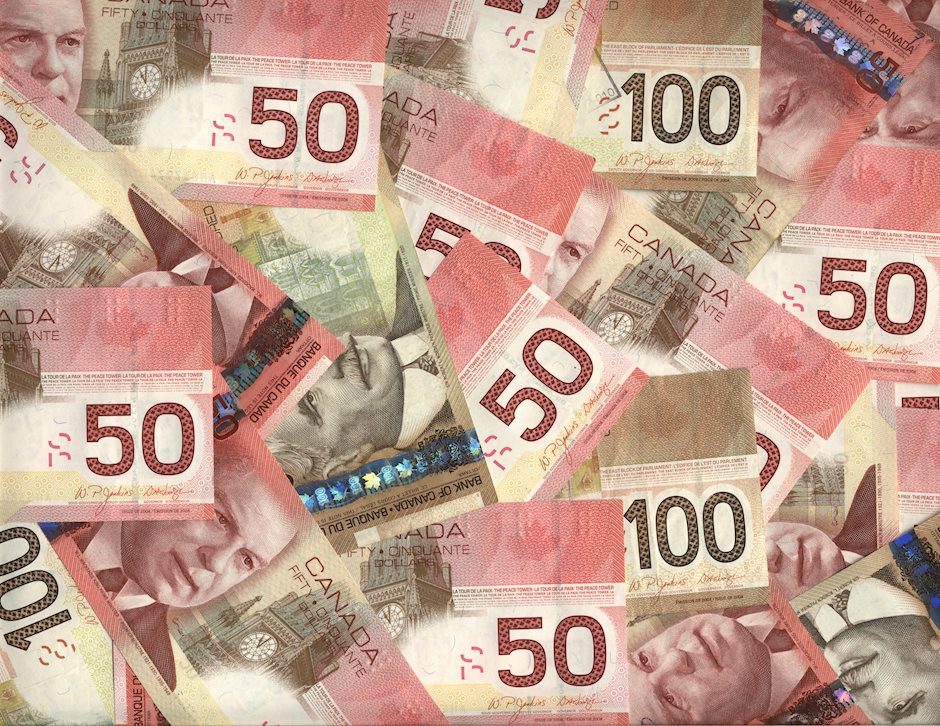USD/CAD holds below 1.3900 on dovish Fed bets, eyes on US PMI data
- USD/CAD trades with mild gains 1.3880 in Monday’s early European session.
- The uptick of the pair is bolstered by the risk-off sentiment.
- Traders expect one more 25 bps rate cut by the BoC in its September meeting.

The USD/CAD pair posts modest gains near 1.3880 during the early European trading hours on Monday. The fall of crude oil prices exerts some selling pressure on the commodity-linked Canadian Dollar (CAD). However, the safety flows might provide some support to the Greenback and cap the pair’s upside. The US ISM Services Purchasing Managers Index (PMI) on Monday will be the highlight.
The risk-off sentiment amid escalating geopolitical tensions in the Middle East might boost the safe-haven currency, lifting the Greenback against the Loonie. US Secretary of State Tony Blinken told his counterparts from the G7 countries on Sunday that an attack by Iran and Hezbollah against Israel could start as early as Monday, three sources briefed on the call told Axios.
However, the weaker US Employment data on Friday could spur the Federal Reserve (Fed) rate cut expectation this year, which might weigh on the Greenback. The Labor Department revealed on Friday that the US Nonfarm Payrolls (NFP) increased by 114K in July, down from the revised lower figure of 179K in June and below the estimate of 185K. Meanwhile, US Unemployment Rate ticked higher to 4.3% in July from 4.1% in June, the highest level since November 2021.
On the Loonie front, the speculation that the Bank of Canada (BoC) could cut interest rates again this year might undermine the CAD. The markets expect one more 25 bps rate cut this year, with nearly 60% odds that the BoC will cut rates again in its September meeting. Additionally, the lower crude oil prices are likely to exert some selling pressure in the near term as Canada is the leading exporter of Oil to the United States (US).
Canadian Dollar FAQs
The key factors driving the Canadian Dollar (CAD) are the level of interest rates set by the Bank of Canada (BoC), the price of Oil, Canada’s largest export, the health of its economy, inflation and the Trade Balance, which is the difference between the value of Canada’s exports versus its imports. Other factors include market sentiment – whether investors are taking on more risky assets (risk-on) or seeking safe-havens (risk-off) – with risk-on being CAD-positive. As its largest trading partner, the health of the US economy is also a key factor influencing the Canadian Dollar.
The Bank of Canada (BoC) has a significant influence on the Canadian Dollar by setting the level of interest rates that banks can lend to one another. This influences the level of interest rates for everyone. The main goal of the BoC is to maintain inflation at 1-3% by adjusting interest rates up or down. Relatively higher interest rates tend to be positive for the CAD. The Bank of Canada can also use quantitative easing and tightening to influence credit conditions, with the former CAD-negative and the latter CAD-positive.
The price of Oil is a key factor impacting the value of the Canadian Dollar. Petroleum is Canada’s biggest export, so Oil price tends to have an immediate impact on the CAD value. Generally, if Oil price rises CAD also goes up, as aggregate demand for the currency increases. The opposite is the case if the price of Oil falls. Higher Oil prices also tend to result in a greater likelihood of a positive Trade Balance, which is also supportive of the CAD.
While inflation had always traditionally been thought of as a negative factor for a currency since it lowers the value of money, the opposite has actually been the case in modern times with the relaxation of cross-border capital controls. Higher inflation tends to lead central banks to put up interest rates which attracts more capital inflows from global investors seeking a lucrative place to keep their money. This increases demand for the local currency, which in Canada’s case is the Canadian Dollar.
Macroeconomic data releases gauge the health of the economy and can have an impact on the Canadian Dollar. Indicators such as GDP, Manufacturing and Services PMIs, employment, and consumer sentiment surveys can all influence the direction of the CAD. A strong economy is good for the Canadian Dollar. Not only does it attract more foreign investment but it may encourage the Bank of Canada to put up interest rates, leading to a stronger currency. If economic data is weak, however, the CAD is likely to fall.
Author

Lallalit Srijandorn
FXStreet
Lallalit Srijandorn is a Parisian at heart. She has lived in France since 2019 and now becomes a digital entrepreneur based in Paris and Bangkok.

















